Midweek dinner inspo: 3 recipes packed with flavour
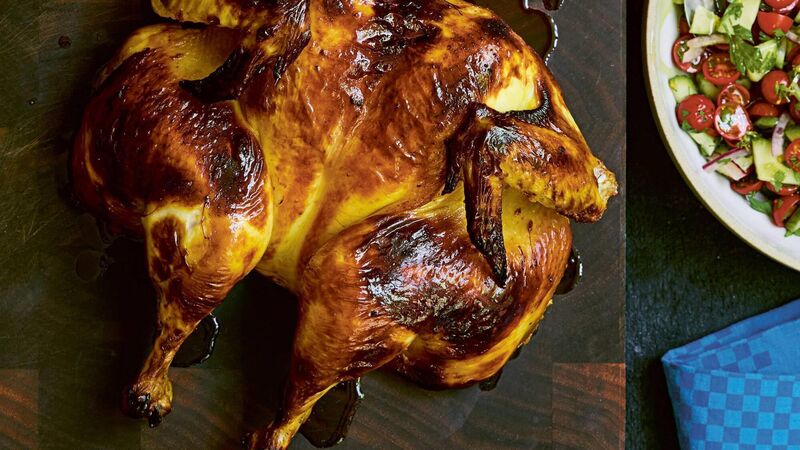
Samin Nosrat's joojeh kabob roast chicken. Picture: Aya Brackett/PA
American-Iranian chef and cookery writer Samin Nosrat may have been catapulted to culinary fame with her debut cookbook - and a hit Netflix series by the same name - but success sent her spiraling.
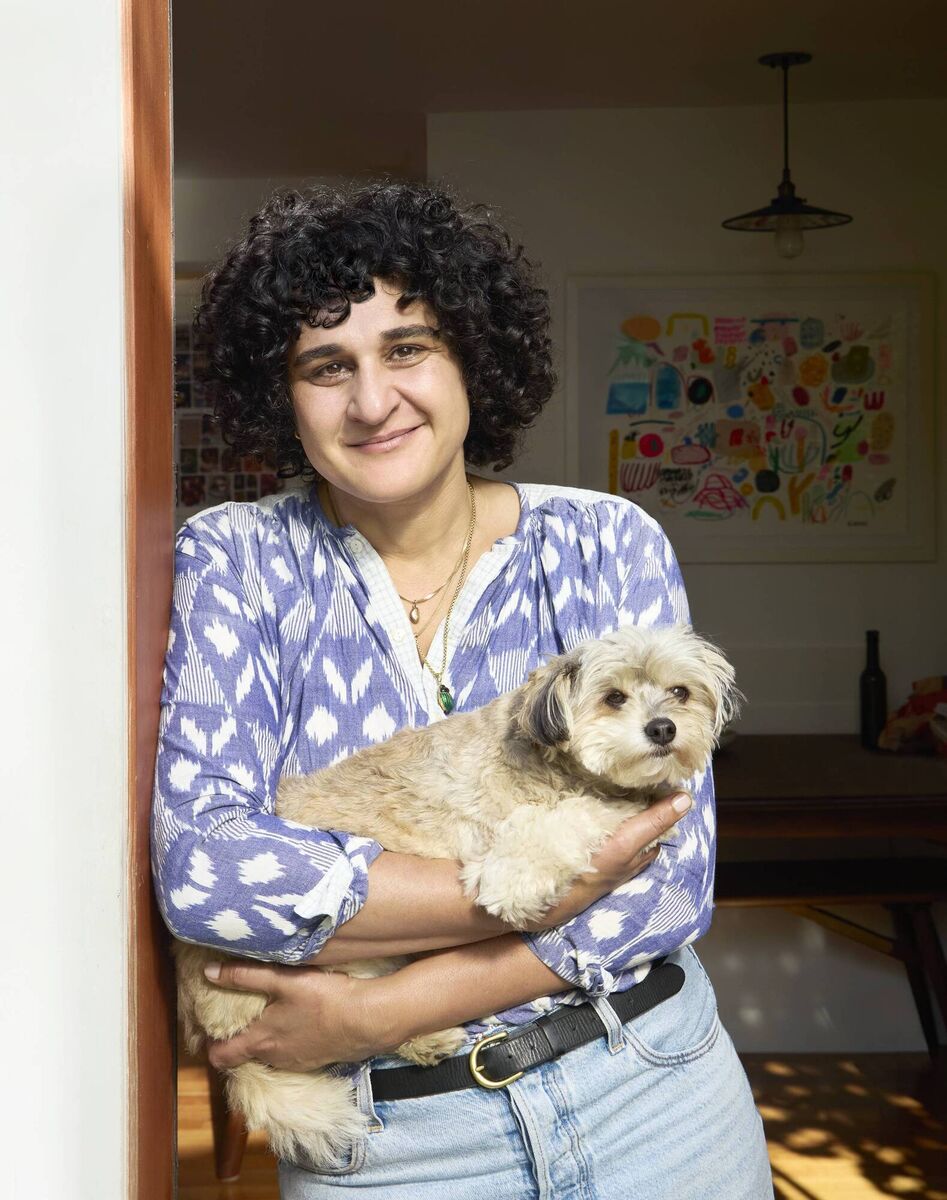
But, she reflects, “I was therapised enough to know that was not actually about me, that’s not a reflection of me. But it’s really hard, when you’re in the middle of it and when it goes on for years, for it not to mess with your head.”
, by Samin Nosrat, is published in hardback by Ebury Press. Photography by Aya Brackett.
We’re officially entering soup season.
“Spicy, vibrant Thai red curries inspired this creamy soup,” says chef and food writer Samin Nosrat. “The multilayered flavours of curry paste, rich coconut milk, and savoury fish sauce perfectly complement the sweetness of the carrots. But it’s the crunchy, umami-packed topping - a spin on miang kham, a snack full of peanuts, coconut, and chillies found throughout Thailand and Laos - that’s the real standout.”
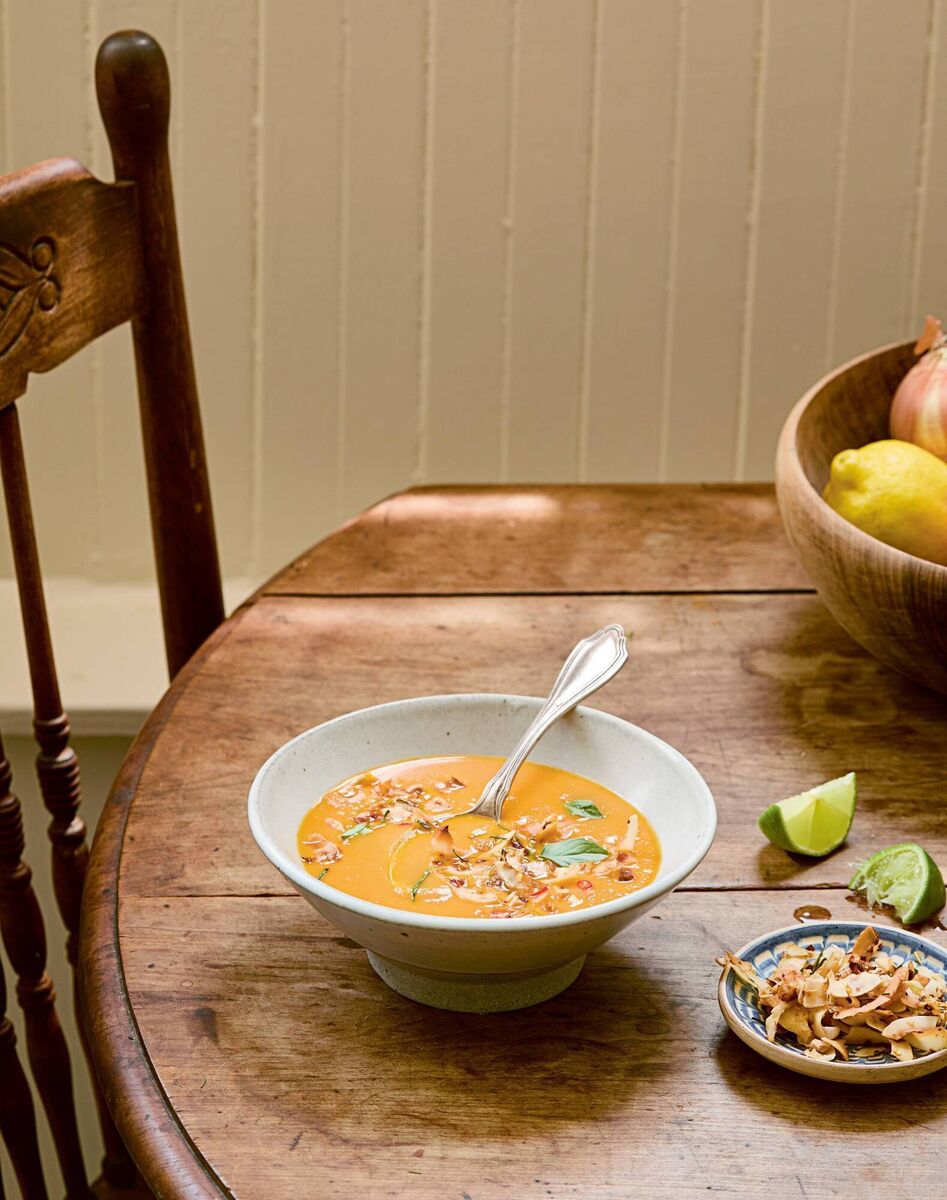
Ingredients (makes about 2 litres)
For the soup:
- 60ml coconut oil
- 3 shallots, diced
- One 5cm piece fresh ginger, peeled and thinly sliced
- 1 lemongrass stalk, cut into 7.5cm pieces
- Kosher salt
- 1.4kg carrots, peeled and sliced 2cm thick
- 765g coconut milk
- 100g to 130g Thai red curry paste, or to taste
- 3tbsp fish sauce
- 720ml to 960ml chicken stock or water
For the garnish:
- 115g salted, dry-roasted peanuts
- 55g dried desiccated coconut flakes
- 2tbsp fish sauce
- 8 small dried red chillies, such as chiles de arbol, thinly sliced
- 1tbsp coconut oil, melted
- 1tbsp minced lemongrass
- 1tbsp sugar
- 10 makrut lime leaves, thinly sliced (optional)
- Handful of Thai basil leaves
- 2 to 3 limes, quartered
1. Adjust an oven rack to the centre position and preheat to 150˚C.
2. To make the soup, melt the oil in a large casserole over medium-high heat. When oil shimmers, add the shallots, ginger, pieces of lemongrass, and a generous pinch of salt. Reduce the heat to low and cook, stirring occasionally, until the shallots are tender and just starting to brown, about 18 minutes.
3. Increase heat to high and add the carrots, coconut milk, curry paste, fish sauce, and 720ml of the stock. As the soup comes to a boil, partially cover the pot and reduce the heat to keep the liquid at a gentle simmer. Cook the soup until the carrots are completely tender, about 25 minutes.
4. Meanwhile, to make the garnish, in a medium bowl, combine the peanuts, coconut flakes, fish sauce, chillies, oil, lemongrass, sugar, and lime leaves (if using). Spread the mixture out on a baking tray in a single layer. Bake until the coconut is a deep golden brown, 18 to 20 minutes, stirring every 3 minutes after the first 10 minutes. Remove from the oven and pour the mixture immediately into a bowl to prevent overcooking. Stir to combine and set aside.
5. Remove the soup from the heat and discard the lemongrass. Use an immersion blender to puree the soup. (Alternatively, transfer soup in batches to a blender or food processor and puree.) Taste and adjust for salt and curry paste. Add more stock or water to thin soup to the desired consistency.
6. Thinly slice Thai basil leaves and arrange on a small plate or platter, along with lime wedges and the peanut mixture. Serve the soup hot with garnishes.
- Requires 4 hours, plus 12-24 hours for proofing and another 4 hours for final proof and bake
- 720g warm water
- 21/4tsp (7g) fast-action dried yeast
- 1/2tsp (4g) honey
- 800g strong white flour
- 2tbsp plus 1/2tsp (20g) kosher salt
- 46g extra-virgin olive oil, plus more for dough handling and tin
- Flaky salt, for sprinkling
1. In a very large bowl, stir together 600g of the water, yeast, and honey. Let sit for 5 minutes, until frothy.
2. Use your hands or a large spoon to mix the flour into the yeast mixture until all the flour is incorporated. Cover with a clean, damp tea towel and let sit for 30 minutes.
3. Add the remaining 120g water, kosher salt, and oil. Use your hands to incorporate. As dough absorbs the salt, it will seem to fall apart - this is fine. Just keep kneading and squeezing it with your hands - it’ll come back together eventually, especially once it has a chance to rest.
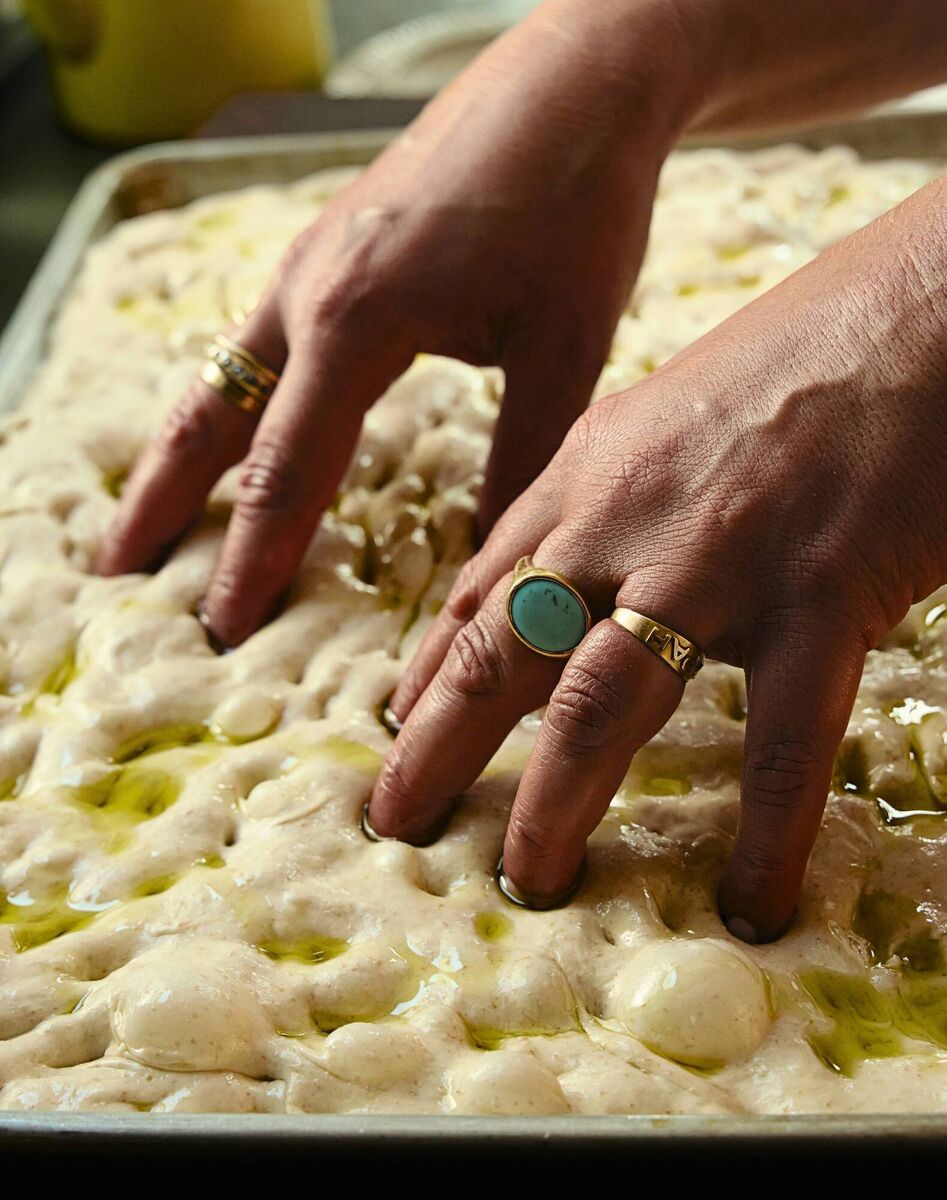
4. Cover bowl with a damp tea towel and set it in a warm spot to continue proofing. Every half hour or so for the next 21/2 hours, turn dough. (NB, each turn consists of four quarter-turns, or folds.) With wet hands, gently loosen dough from the north side of the bowl. Stretch dough up until it resists, then fold it towards south side of bowl. Give bowl a quarter-turn and repeat. Repeat twice more to end up where you started. Cover with damp towel. On this first turn, the dough may not yet be relaxed enough to tolerate all four folds, but do your best. As dough relaxes, it’ll become more elastic,
5. After about 3 hours, the dough should be billowy and have doubled in volume. If not, continue to let rise and turn for up to 1 hour longer, moving the bowl to a warmer spot if necessary. After final set of folds, gather up edges of dough into centre as if you’re making a massive dumpling, then carefully flip it to tuck the join underneath. Gently coat top of dough with a little oil, seal bowl with clingfilm or lid, refrigerate for 12-24 hours.
6. Generously coat bottom and sides of a 33 x 46cm baking tin with nonstick cooking spray, then drizzle with 2 to 3 tablespoons oil. Gently transfer dough to tin, cover with clingfilm or a lid, and set in warm spot to come to room temperature for 30 minutes. With lightly oiled hands, gently stretch dough to fill the tin, then drizzle with another 2 to 3 tablespoons oil. Return the pan to a warm spot and allow to proof for 30 minutes.
7. Gently stretch the dough again to fill the entire tin. Repeat stretching twice more over the next hour, then continue proofing dough untouched until it’s jiggly, bubbly, and flush with the top of the pan, 1-2 hours longer, depending on the ambient temperature. (Don’t rush this step - it will make all the difference in getting the tallest, chewiest focaccia possible!)
8. Meanwhile, adjust oven rack to lowest position, place overturned baking tray on the rack, and preheat to 230C. Once dough is flush with the top of the tin, dip pads of your fingers in any oil that’s pooled in corners of tin. Spread your fingers wide like a piano impresario and make dimples across the entire tin of dough, pressing firmly to the bottom of the tin. Sprinkle evenly with flaky salt.
9. Place baking tin with the focaccia on overturned baking tray in oven and bake for 25-28 minutes, until corners are pulling away from tin and the top is golden brown and glistening. If the top needs a little more browning, transfer to the top rack and bake for 3-5 minutes longer.
10. Cool focaccia in tin for 5 minutes, then use a thin flexible metal spatula to gently loosen it from the tin. Cool completely on a wire rack before slicing. Store for up to 3 days wrapped in a paper bag inside of a plastic bag (this prevents the salt from dissolving). Bring back to life with a quick toast. Freeze for up to 3 months.
- Requires overnight marinating
- 1 whole chicken (1.6 to 1.8kg)
- Kosher salt
- 1/2tsp saffron threads, ground and bloomed
- 1tbsp tomato puree
- 4tbsp freshly squeezed lime or lemon juice
- 365g natural yogurt or buttermilk
- 1 brown onion, thinly sliced
- 2 garlic cloves, finely grated
- 1/2tsp coarsely ground black pepper
1. The day before you plan to cook, spatchcock the chicken and generously season it with salt on both sides. Let the chicken sit at room temperature while you prepare the marinade.
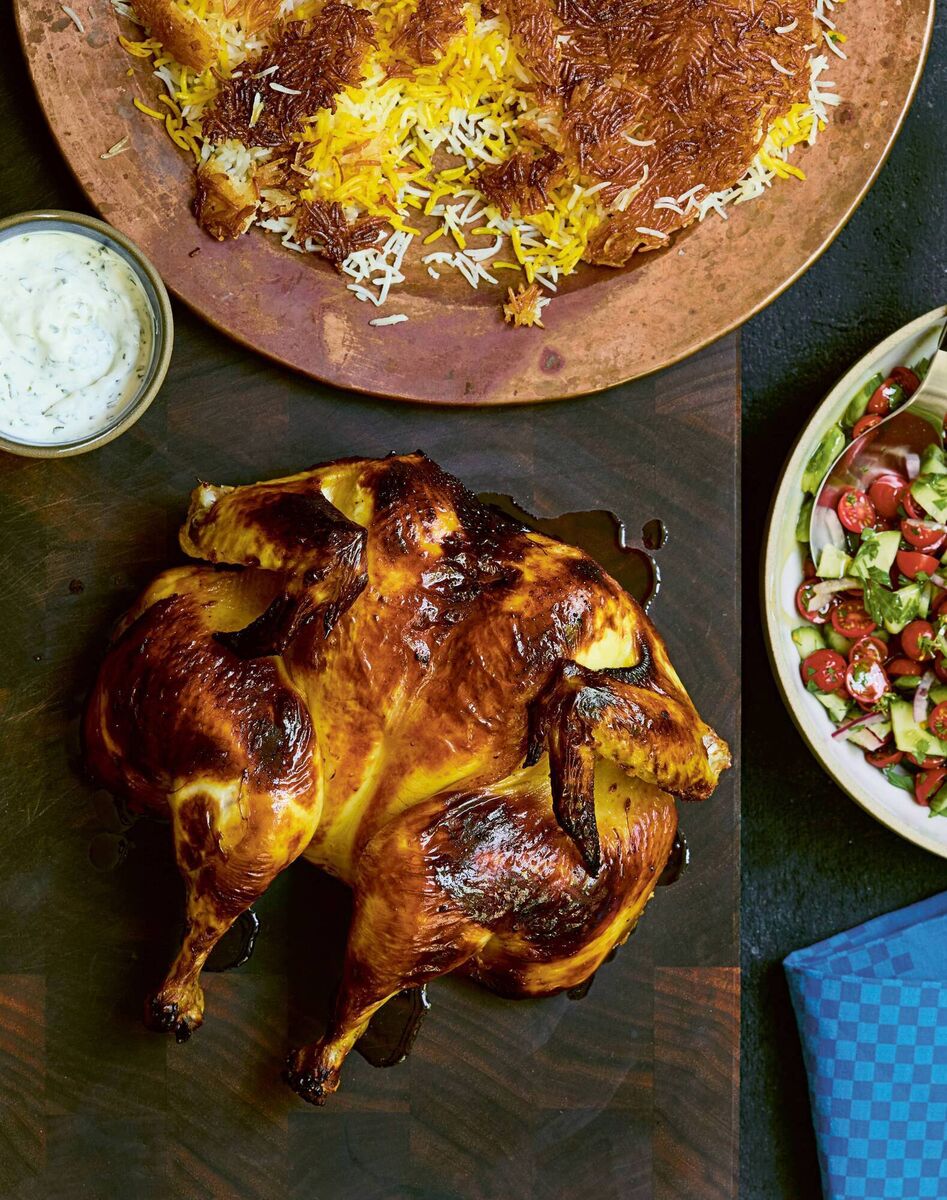
2. In an extra-large zip-lock plastic bag, whisk together the bloomed saffron, tomato puree, and lime juice until evenly combined. Add 2 tablespoons (18g) kosher salt and the yogurt, onion, garlic, and pepper. Add the chicken, seal the bag, and squish the yogurt all over the chicken. Place it on a rimmed plate and refrigerate. If you’re so inclined, over the next 24 hours you can turn the bag so every part of the chicken gets marinated, but it’s not essential.
3. An hour before cooking, remove the chicken from the yogurt and scrape off any aromatics. Bring the chicken to room temperature.
4. Adjust an oven rack to the centre position and preheat to 220˚C.
5. Arrange the chicken, breast-side up, on a wire rack set over a baking tray (line the tray with parchment to make clean-up easier). Cook until the chicken is a dark golden brown and the juices run clear when you cut between the leg and the thigh, about 45 minutes. (Loosely cover the chicken with a piece of foil for the last 10 minutes if the skin is getting too dark.)
5. Let the chicken rest for 5 minutes before serving with crispy rice, garlic and herb labneh, and Shirazi salad.




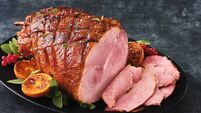


 App?
App?





